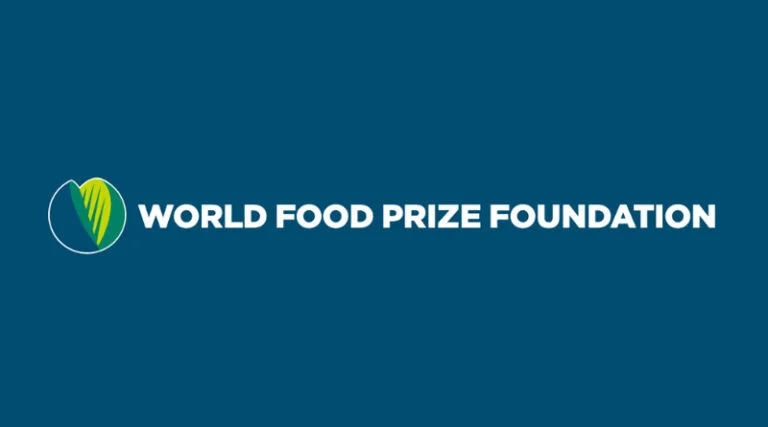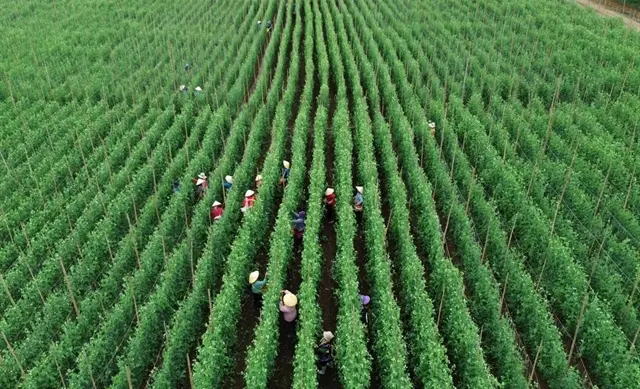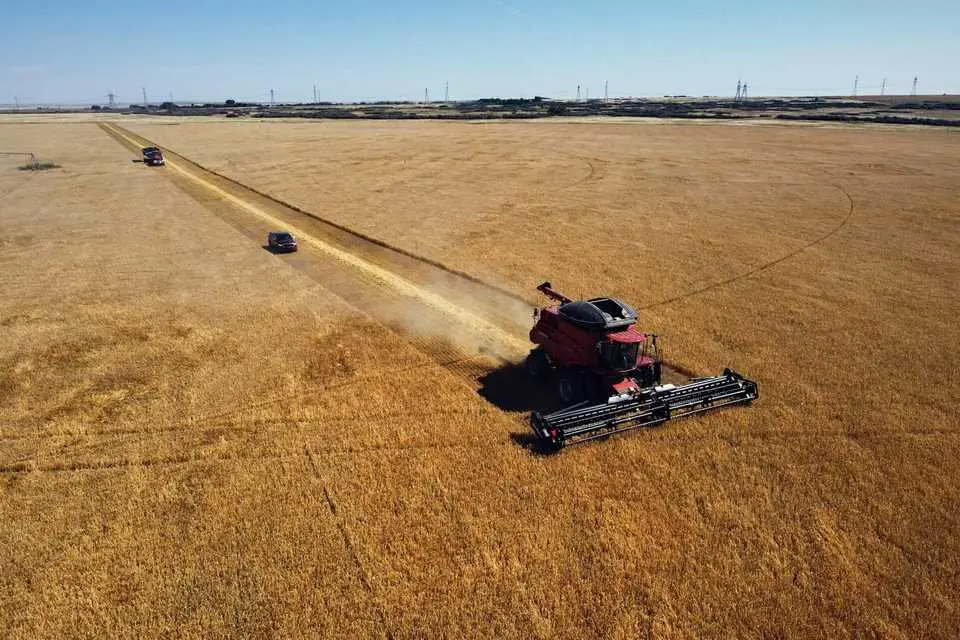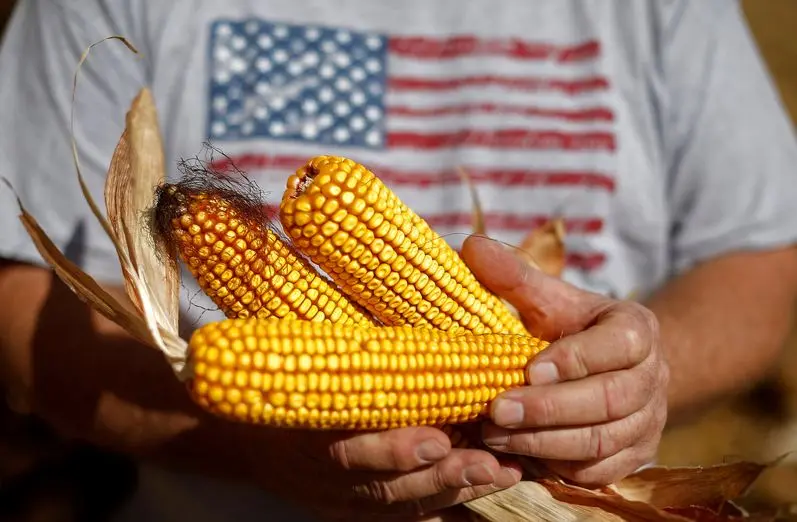UC Davis plant geneticist Pam Ronald has been named the recipient of the 2022 International Wolf Prize in Agriculture, given by the Jerusalem-based Wolf Foundation in recognition of her “pioneering work on disease resistance and environmental stress tolerance in rice.”
She is the first woman among six UC Davis scientists to receive the Wolf Prize in Agriculture. The foundation has been giving its $100,000 prizes in agriculture and other disciplines since 1978, honoring scientists and artists from around the world “for their achievements in the interest of mankind and friendly relations amongst peoples.” This year the foundation gave multiple prizes in chemistry, physics and architecture, and single awards in mathematics, music and agriculture.
Ronald is a distinguished professor in the Department of Plant Pathology, having joined the faculty in 1992, and is also affiliated with the UC Davis Genome Center and the Physical Biosciences Division at Lawrence Berkeley National Laboratory.
The Wolf Foundation noted her work isolating a gene that allows rice to survive two weeks of flooding and increases yield by 60 percent compared to conventional varieties.


In Ukraine, at the end of the 2024/25 marketing year, there is a supply shortage of sunflower oil, caused by limited sunflower supply and the transition of most plants to processing soybeans and rapeseed, according to agronews.ua.
Against this background, domestic prices for raw sunflower oil have risen to 58000-60000 UAH/ton on FCA factory terms, equivalent to 1160-1200 $/ton, while export prices stand at 1135-1145 $/ton for shipments in August and 1100 $/ton for deliveries in September.
As a result, small plants have increased processing and raised prices for sunflower (with an oil content of 50%) to 27500-28000 UAH/ton with delivery to the plant.
It is worth noting that demand prices for August shipments of sunflower oil to India currently amount to 1210-1220 $/ton, to China – 1150 $/ton, and to EU countries – 1200-1220 $/ton.
Dry weather in the Mykolaiv and Dnipropetrovsk regions may reduce sunflower yields by 1 million tons, but favorable conditions for sunflower sowing are present in other parts of Ukraine, so the production forecast remains at 13.5-14 million tons.
It is expected that Moldova, Bulgaria, and Romania will increase sunflower production compared to the previous year, but the market’s main focus is currently on crop forecasts in Russia and Kazakhstan.
08 August 2025, US: The World Food Prize Foundation announced today the Top Ten agritech startups selected for its inaugural Innovate for Impact Challenge, a global competition recognizing scalable, science-based innovations advancing agricultural productivity and sustainability. The semi-finalists were selected from nearly 400 submissions spanning 65 countries across all hemispheres.
The Top Ten startups—representing eight countries and four continents—bring a diverse range of technical expertise,
including biotechnology, digital agriculture, post-harvest innovation, soil and seed science, animal health and
renewable energy solutions. Their selection underscores the geographic breadth and disciplinary depth of the
Challenge, as well as the growing global momentum to advance food systems innovation.
“The Innovate for
Impact Challenge embodies the mission of the World Food Prize Foundation: elevating bold ideas, amplifying global
collaboration and accelerating solutions to end hunger,” said Mashal Husain, President, World Food Prize Foundation.
“These Top Ten ventures are more than finalists; they are trailblazers shaping the future of food.”


Ukraine has received the official right to export sunflower seeds for sowing to Argentina. This was announced by the head of the State Service for the Protection and Regulation of Food and Consumer Protection of Ukraine, Serhiy Tkachuk.
The opening of the market became possible thanks to the coordination of phytosanitary requirements between the countries.
Ukrainian exporters can enter the Argentine market provided that they are complied with.
HÀ NỘI — Việt Nam has undergone a remarkable transformation in agriculture to emerge as one of the world’s leading agricultural exporters, playing a crucial role in the global food supply chain.
According to the National Statistics Office under the Ministry of Finance, the output of unhusked rice between 1976 and 1980 averaged just 13–14 million tonnes annually. In 1978, production fell to a historic low of 9.8 million tonnes, forcing Việt Nam to import nearly 1.6 million tonnes of milled rice per year.
At the Sixth National Party Congress in 1986, the Communist Party of Việt Nam designated agriculture as a top priority. A series of bold reforms followed, most notably the Politburo’s Resolution 10-NQ/TW, dated April 5, 1988, which gave farmers autonomy in production and business on allocated land plots over extended periods.
This landmark policy was a crucial part of the Đổi Mới (Renewal) policy, empowering farmers and injecting vitality into Việt Nam’s agricultural development.
More recently, a revolution in the application of science and technology, combined with institutional reform, has marked a major turning point for Vietnamese agriculture, particularly in the rice sector.


Kim McConnell calls himself a “farm kid” from Manitoba, but it was what he accomplished off the farm that landed him in the Canadian Agricultural Hall of Fame.
The late 1970s and early 1980s saw an explosion in farm technology. New fertilizers. New seeds. New animal health products. McConnell observed that the multinationals that had created all that tech were poor at selling it. So he set up a “little marketing and communications business” out of his basement, seeding it with $5,000, “because that’s all I had.”
The late 1970s and early 1980s saw an explosion in farm technology. New fertilizers. New seeds. New animal health products. McConnell observed that the multinationals that had created all that tech were poor at selling it. So he set up a “little marketing and communications business” out of his basement, seeding it with $5,000, “because that’s all I had.”
Some four decades have passed and AdFarm remains a going concern, a testament to how strong primary industries generate more economic activity than shows up in tallies of gross domestic product.
Coherent Market Insights has released a report titled "Sunflower Lecithin Market: Industry Trends, Share, Size, Growth, Opportunity, and Forecast 2025-2032", which includes market percentage records and a thorough enterprise analysis. This report looks at the market's competition, geographic distribution, and growth potential. This comprehensive report encompasses industry performance, critical success factors, risk assessment, manufacturing prerequisites, project expenses, economic analysis, anticipated return on investment (ROI), and profit margins.
This comprehensive report delves into the evolving trends, obstacles, and prospects within the dynamic landscape of the market. From catalyzing technological progress to innovation and sustainability endeavours, the Sunflower Lecithin Market profoundly influences the contemporary global economy. Integrating desk research with qualitative primary research it becomes an indispensable tool for entrepreneurs, investors, researchers, consultants, and business strategists contemplating entry into the market. This report provides impactful insights for our clients including a vast collection of research databases and data repositories. Furthermore, providing Sunflower Lecithin research services to drive our client's success.


PepsiCo and Cargill today announced a strategic collaboration to implement regenerative farming practices on 240,000 acres between 2025 and 2030. The project covers a shared corn supply chain in Iowa, where Cargill sources from local farmers to produce ingredients used in PepsiCo’s iconic products.
Corn is a key crop for both partners. PepsiCo sources 35 crops and ingredients from more than 60 countries; as a global supplier to PepsiCo, Cargill plays a key role in building a seamless supply chain from farm to fork. The joint goal is to strengthen the resilience of the supply chain by promoting regenerative farming practices and improving the socio-economic conditions of farming communities.
Iowa remains the largest corn-producing state, accounting for more than 15 percent of the nation’s total in 2024. As part of the project, regional NGO Practical Farmers of Iowa (PFI) will consult with farmers, providing customized recommendations based on local conditions and crops. Such an approach, the partners emphasize, is necessary for the large-scale implementation of regenerative agriculture.